
Lot 372
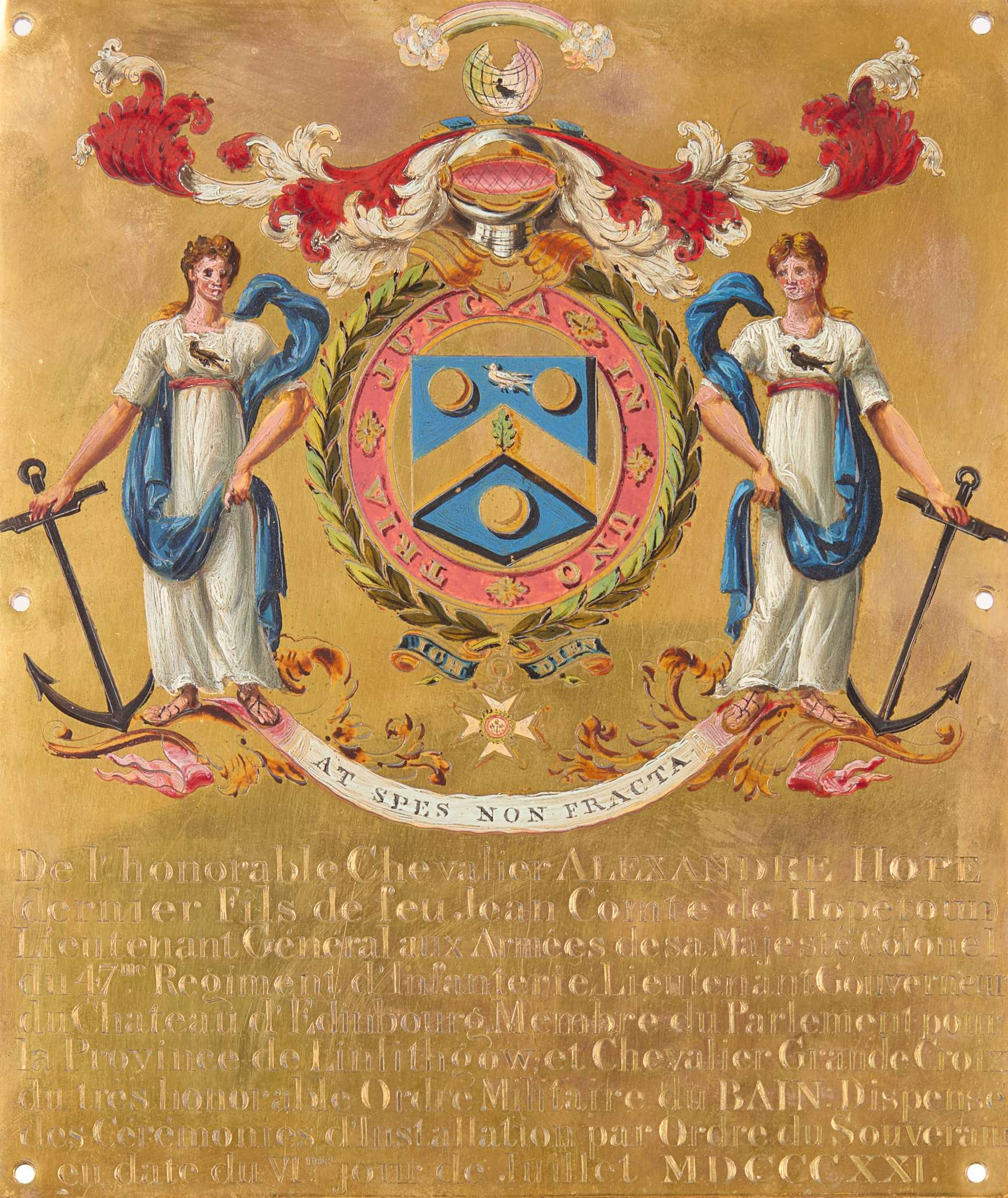
AN EARLY 19TH CENTURY BRASS AND HAND-PAINTED ARMORIAL STALL PLATE FROM THE ROYAL CHAPEL WINDSOR
BY G. HARRIS, SHOE LANE LONDON
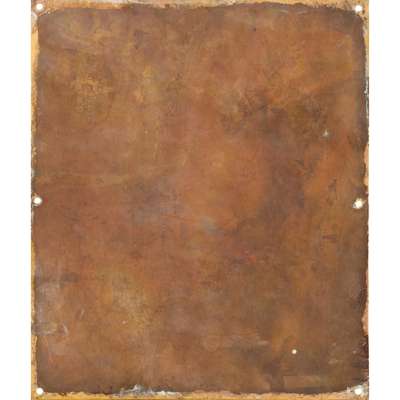
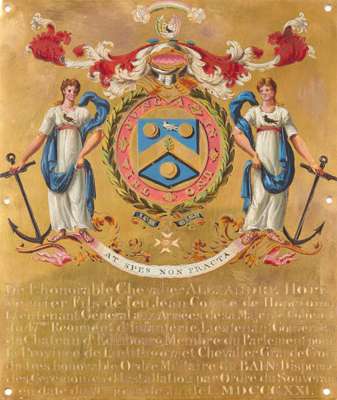
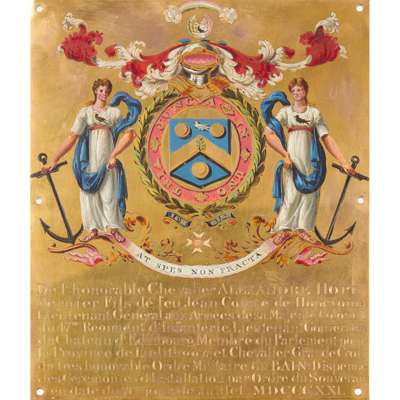



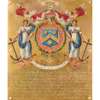
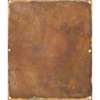
Auction: Day 2: Thursday 21 August - Lots 297 - end
Description
the rectangular brass plate with finely enamelled armorial with supporters and crest, engraved below “De l'honorable Chevalier ALEXANDRE HOPE (dernier Fills de feu Jean Comte de Hopetoun) Lieutenant Général aux Armées de sa Majesté, Colonel du 47th Regiment d'Infanterie Lieutenant Gouverneu du Chateau d'Edinbourg, Membre du Parlement pour la Province de Linthlithgow; et Chevalier Grande-Croix”du très honorable Ordre Militair du Bain: Dispense des Cérémonies d'Installation par Order du Souverain en date du VIme jour de Juillet MDCCCXXL"
Dimensions
19cm x 23cm
Footnote
Lieutenant-General Sir Alexander Hope (1769 - 1837)
Born into the Hope family, Alexander was the 4th son of the 2nd Earl of Hopetoun (1704-1781) who had thirteen children with three wives. The Hope family has a lineage stretching back as far as the 16th century. The ancestral home of Hopetoun House has been in the family for 300 years and the house was originally designed by the architect Sir William Bruce. In 1721 the renowned Scottish architect William Adam was commissioned to undertake a programme of alterations and improvements that lasted until 1767.
Alexander Hope had a hugely successful military career culminating in his appointment as the last Governor of the Royal Military College, Great Marlow and then was Governor at Sandhurst between 1811-19.
Beginning his military career with the 63rd (West Sussex) Regiment of Foot in 1786, he served in the Flanders Campaign in 1795 and was left with permanent damage to his arm. He was thereafter appointed Lieutenant-Governor of Tynemouth and Cliff Fort in 1797, Lieutenant-Governor of Edinburgh Castle in 1798 and Deputy Assistant Adjutant General to the Forces in Holland in 1799.
The Memorials to Governors in the Chapel of the present-day Royal Military Academy, Sandhurst, includes: ″In Memory of Gen. the Honble. Sir Alexander Hope, G.C.B., Colonel 14th Foot. Born 9th Dec, 1769; died 17 May 1837. Commanded the 14th Regiment at Gueldermalsen, 1795 ; wounded. D.A.A.G. to the Forces in Holland, 1799. Twice Special Envoy to the King of Sweden. Governor R.M. College, Great Marlow, 1811–12. Governor of this College, 1812–19, and again, 1824–26. Lieut.-Governor Chelsea Hospital, 1826–37.″
Hope was made a Knight Grand Cross of the Order of the Bath in 1815, an honour to recognise service to the Crown and the performance of public duties, particularly within the military and civil service. Important recipients include Admiral Nelson, the Duke of Wellington and Lord Kitchener, among others. The order was founded in 1725 by King George I. The Order of the Bath stall plates are housed in Westminster Abbey in the Henry VII chapel. The stall plate as seen here, displays the name and the arms of the Knight and each successive knights’ plate is added to the stall.
A portrait engraved by William Walker (1791-1867) from a painting by Sir Thomas Lawrence (1769-1830) in 1810 when Hope is Deputy Quarter Master General to the Forces is held in the National Gallery (SP V 130.1). Lawrence was the most fashionable portrait painter at the time, and shows the importance of Hope to have his portrait commissioned by Lawrence.







